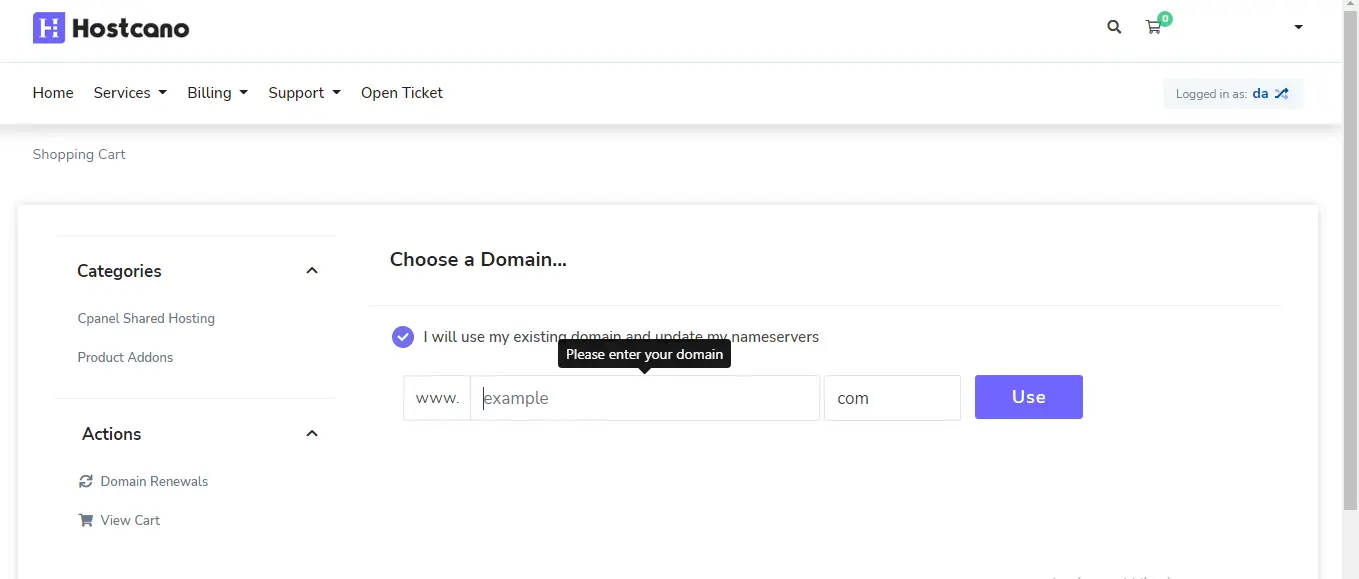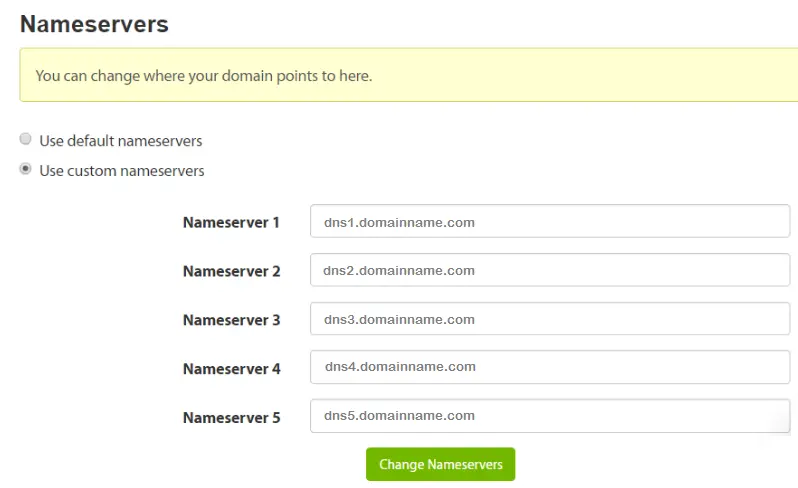If you are the owner of your website, you might have heard of the phrase “nameserver.” But you might not know what it means or how it functions. In the end, knowing basic information about this concept could help manage your website.
Simply put, a nameserver aids browsers in establishing connections between websites and URLs. Nameservers are extremely important because we’d be required to remember IP addresses to connect to websites without them. When you’ve mastered the basics of nameservers and nameservers, you’ll be able to create another one should there is a need.
In this article, we’ll discuss the purpose of nameservers, what they can do, and how to set up one in your name for the domain you want to register. Let’s get started!
What is Nameserver? (How They Function)
Nameservers work each time a user visits websites; however, many people aren’t aware of what they are. To comprehend the concept of nameservers, one must understand what happens when a web page is visited.
As you’re likely aware, each device connected to the Internet is identified with an IP address unique to it. Nameservers form part of the vast database known as “the Domain Name System (DNS) that acts as a directory of devices and their IP addresses.
Nameservers use this information to convert domain names into IP addresses in numbers that computers can understand. The process is so fast that it’s nearly never noticed. When you enter a URL, the Nameserver informs the browser to understand where the website is, and then the desired page is loaded.
Without this service, it would be necessary to enter long URLs into browsers each when we needed to open an internet site. Thus, the service offered by nameservers is precious. Nameservers are used to refer to any server with DNS software on it. However, the term typically refers to a server owned by a web host who manages the domain names of customers.
Let’s look at what in a Nutshell Nameserver Is?
Nameserver is an application that assists in translating IP addresses to the domain. These parts in the IT infrastructure are typically required to run Web installation components, as domain names act as identifications for specific areas of the Internet.
The name server converts domain names to IP addresses. It allows users to access the site by typing the domain name instead of the IP address used by the site. For instance, if you input “www.company.com,” the request is routed to the domain name of the company server, which then returns an IP address for the company’s website.
How to set up a Nameserver for your domain (2 Nameserver Options)
It’s good to know that setting up the Nameserver or names to your domain is pretty simple. Before we begin, remember that DNS changes could take as long as 24 hours to be effective. But it’s generally possible to access them before that time in case you require them.
In most cases, typically, there will be two nameservers that are associated with the site. What is the significance of this? Domain names are based on only one Nameserver, the primary DNS. But, if any issue causes your domain’s server to become unavailable, your business could be affected.
It is why two nameservers are connected to domains. Two nameservers are a standard security measure to keep domains from connecting with the Internet.
The Reasons You Might Want to create a Nameserver for Yourself
In the majority of cases, there is no requirement to do anything with the nameservers that are associated with your website. There are, however, a few scenarios where you’ll require the registration of an individual nameserver that you can set up to control how your registered domain name is displayed.
In this case, for instance, you might have a domain bought from a different company that is different from the one you currently employ; in this situation, creating a nameserver that is custom-made will aid in creating a more distinct and more distinctive brand instead of using the one that is associated with the hosting provider. It could also be necessary if you have the option of a reseller hosting account and a Virtual Private Server (VPS) account.
Whatever the reason, there are plenty of advantages to having your Nameserver.
- It is easier for reseller customers to recognize your domain nameserver. Custom nameservers are connected to your domain rather than your web hosting providers. Utilizing the same domain for your site and Nameserver will give your customers more security.
- Changes to your hosting provider are more manageable if you’ve got an individual nameserver, particularly in the case of an account for resellers. This way, your clients don’t have to update the names of servers.
- Additionally, having your Nameserver means you are not releasing the details of the third party to your clients.
Nameservers with custom names aren’t required. However, having one may prove beneficial (especially in the case of an online business website and the reseller of Hosting). In the next part, we’ll discuss two ways to access one.
What’s the Actual Difference Between Nameserver and DNS?
The term DNS refers to the Domain Name System, a set of distributed domains that convert domain names into respective IP addresses. DNS is an established protocol set that allows computer systems to be connected to the Internet. In contrast, a name server is a server on which the DNS information of your computer is kept to allow internet access. It is a crucial component of the DNS that connects to the webserver’s IP addresses and URLs. Name servers connect your registrar with your host service.
Every time you type in an address for a website to send an email or connect to an IP application, you are using DNS. DNS is vital to nearly every Internet Protocol (IP) network application’s efficiency, from web surfing to multimedia applications, email, and much more. DNS converts hostnames into IP addresses so that browsers can access Internet services. On the other hand, name servers can store or host the versions. A name server hosts a name record or the domain name transfer record.
The Significance and The Importance of Nameserver
NAMESERVER is at the heart of the way that the internet functions. When you type a domain’s name in your browser, your computer connects to a NAMESERVER server in search of the appropriate IP address.
If you type a web domain in your browser, for example, domainabc.com, your computer will connect to a NAMESERVER server to find the website’s IP address. After the IP address is discovered, your computer will connect to the web server, providing your computer with the web page you’d like to access. It is known as Domain Name Resolution.
Nameserver aids people in finding websites. When someone types your domain name (your web address) into an online search engine, the Nameserver redirects them to your site. After the connection is established with your server, the request for the file you searched for is completed, and the results are displayed on your monitor. This entire process isn’t crucial to the user since it can take milliseconds.
In simple terms, Nameserver is the location of your site. The owner of a retail establishment must know the address of his store as well as your Nameserver.
There are many scenarios where you’ll need to identify your Nameserver. For instance, if, for example, you bought a domain from a different registrar that is not the web hosting service you use, you will have to direct that domain’s address to the correct address.
If you decide to switch web hosting providers, you can redirect the domain name nameservers of the new hosting company. It will ensure that your internet traffic doesn’t interrupt, and you don’t have to start from scratch in the beginning by registering a new domain.
Benefits of Owning a Private Nameserver
Private domain servers indicate that they are linked to the same domain instead of a hosting firm. There are several advantages of having private servers:
- They will stop your reseller status and allow you to change the name of your hosting service under the domain name.
- It is easier for customers to recall your domain’s nameservers if they match your domain.
- It can give your clients an enhanced feeling of security since they’ll share the same background as your name servers and website. It makes switching hosts an easy process, as your clients will not have difficulties upgrading their servers.
- Using the same name server in your main domain for your park domain is also recommended. Domains that are parked refer to other domains that are linked to your account using the same domain name as your primary domain. Companies who require more than one advertisement web address generally employ it.
Most web hosting providers send you directions on creating your nameservers on your registry. You’ll need an address with an IP for every Nameserver you see in your host, as well as their sub-domains.
Once you’ve completed this setup After you have completed this setup, your DNS server will function, and so will the hosting provider you have chosen to use.
How Do You Change Your Existing Nameserver?
To switch your current name server, log into your account on hosting. In the case of Hostcano, follow the below steps:
First off, you will need to choose and domain.
- After logging in, go to choose a Domain if you haven’t chosen a domain in Hostcano yet.
- The next step is to go to Domains > My Domains.
- You’ll then be able to select the domain you would like to use. The following screen will appear; you will see Nameservers beneath Manage.
- In this section, you’ll see the options to use standard nameservers or custom servers.
- Be aware that you must choose the default servers if you want to utilize the hosting portal client to control the DNS setting.
How do I set up A Custom Nameserver?
If you’d like to set up nameservers that you have created, on the other hand, you can enter their names into these fields. You must create at least one server and be prepared to go. If you don’t, you could follow the steps below instead.
We will now look at the procedure to install an entirely new custom nameserver on your website. In this case of that, your site’s domain name is www.example.com. You can create custom nameservers known by the names ns1.example.com or ns2.example.com. It is usually utilized when you have an account with a reseller or VPS.
The process of setting up a custom nameserver is a two-step procedure. The first step is to check if you have the right A records. If you have a reseller hosting account for your website, you’ll need to create the essential DNS records. If you’ve got a controllable VPS hosting account through Hosting, it isn’t necessary to add records since they’ve already been created. But it’s essential to ensure that your accounts are correctly set up.
After you’ve finished that, you’ll be able to make a note in advance and sign on the nameservers you want. Like before, click the Domains tab of your client portal after clicking on My Domains. Choose the down arrow following your domain. There is the option to manage Nameservers.
What Happens When you update it?
After successfully updating your DNS servers, your domain will begin to recognize the server it is identifying. But the process of changing your DNS server can be speedy.
The process typically takes 24 to 48 hours to finish. It is known as DNS propagation. When DNS is distributed, servers across the globe get notifications regarding the progress that your DNS server is experiencing.
At this point, there could be peculiar issues related to sending your emails. That’s why we recommend updating your Nameservers in the evening or during quiet times for your organization.
Final Verdict
Nameservers connect your domain name with your server’s IP address, which is essential for the flow of traffic over the Internet. We’d have to keep track of IP addresses if we did not use them to connect to websites. Nameservers work so quickly that visitors and you will not notice them. You won’t require changing them under most circumstances.
There are times; however, there are times when you’ll need to create name servers on your own. Make sure to update the current nameservers that are associated with your domain. You can also create custom nameservers by looking over A records.


